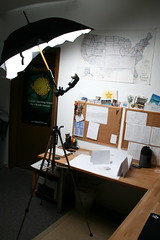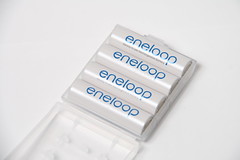Studium – Seminare, Protokolle, UROP
 Nach einer Menge Posts über anderen Kram und neidischen Blicken zu Flos aufgeräumter Studiumsseite wollte ich mal noch ein paar Dokumente aus den letzten Semestern aus dem Schrank holen. Vielleicht hilft es ja dem ein oder anderen Studieninteressenten der sich nicht vorstellen kann was man überhaupt so während seines Informatikstudiums macht.
Nach einer Menge Posts über anderen Kram und neidischen Blicken zu Flos aufgeräumter Studiumsseite wollte ich mal noch ein paar Dokumente aus den letzten Semestern aus dem Schrank holen. Vielleicht hilft es ja dem ein oder anderen Studieninteressenten der sich nicht vorstellen kann was man überhaupt so während seines Informatikstudiums macht.
Seminare
Seminare bei uns in der Informatik funktionieren wie folgt: Man bewirbt sich auf ein Seminar zu einem groben Überthema bei einem der Informatik-Lehrstühle. Wenn man Glück hat kriegt man den Platz seiner ersten Wahl. Vor dem Semester sucht man sich dann eins der Themen aus und kriegt ein oder mehrere Paper auf denen man aufbauend seine Seminarausarbeitung schreiben soll. An der Stelle merkt man schon dass der Anteil origineller Arbeit beschränkt ist, was durchaus so vorgesehen ist. Ziel eines Seminars ist es schliesslich sich selbstständig in ein Thema einzuarbeiten und das Ganze dann in einen wissenschaftlich aussehenden Artikel zu gießen. Dafür hat man ein paar Monate Zeit, am Ende gibt es dann ein paar Tage lang Vorträge an denen man sein Seminar den anderen Teilnehmern vorstellt. Ich habe im Hauptstudium zwei Seminare gemacht (und ein Praktikum):
- Praktische Informatik: The most efficient SHA-1 attacks (Prof. Meyer) – Ausarbeitung und Slides
- Theoretische Informatik: Das Cross-Section-Theorem und nicht-mehrdeutige Transducer (Prof. Thomas) – Ausarbeitung und Slides
Prüfungsprotokolle
Bei uns im Hauptstudium schreibt man keine Klausuren mehr (abgesehen von ein paar Scheinklausuren) sondern hat mündliche Prüfungen. Manche Leute schreiben Gedächtnisprotokolle einer Prüfung, damit sich andere besser auf die Atmosphäre bei solchen Prüfungen und den Tiefgang vorbereiten können, den eigentlichen Stoff der abgefragt wird sollte man ohnehin komplett drauf haben ;)
- Protokoll Theoretische Informatik: Angewandte Automatentheorie, Unendliche Spiele, Automaten auf unendlichen Wörtern, Cryptography I + II (Prof. Thomas, Prof. Mathar) – Protokoll
- Protokoll Praktische Informatik: Datenbanken, Logic of Knowledge Bases, Logikprogrammierung (Prof. Lakemeyer) – Protokoll
- Protokoll Vertiefung: IT Security I + II, Massively Distributed Systems I, Communication Systems Engineering I (Prof. Wehrle, Prof. Meyer) – Protokoll
UROP
Zusätzlich haben Flo und ich noch an UROP teilgenommen, dem Undergraduate Research Opportunities Programme der RWTH. Für UROP werden Projekte in unterschiedlichen Fachbereichen ausgeschrieben auf die man sich bewerben kann um dann schon während des Studiums erste Schritte im wissenschaftlichen Arbeiten zu machen. Unser Projekt, welches wir am LuFG Informatik 4 – Distributed Systems Group (Prof. Wehrle) durchgeführt haben hieß ALPHA – An Adaptive and Lightweight Protocol for Hop-by-Hop Authentication. Dabei ging es darum ein Protokoll zu implementieren (und zu erweitern), mithilfe dessen Netzwerkpakete an jeder Stelle im Netzwerk auf Integrität geprüft und ggf. direkt verworfen werden können, z.B. um mobile Endgeräte vor falschem Netzverkehr zu schützen der sonst die Resourcen (CPU und damit auch Batterie) dieser Geräte beanspruchen würde. Zu UROP werde ich bald noch einen eigenen Artikel schreiben. Für UROP mussten wir eine kurze Ausarbeitung schreiben, mit ein bisschen Hintergrundwissen sollte man das Prinzip von ALPHA verstehen.
- Implementation and Improvement of ALPHA: Ausarbeitung für UROP und Slides des UROP Kolloquiums
- ALPHA – An Adaptive and Lightweight Protocol for Hop-by-Hop Authentication: Das Original-Paper auf dem das Protokoll aufbaut
Bei Fragen oder Verbesserungsvorschlägen könnt ihr euch wie immer gern bei mir melden.







